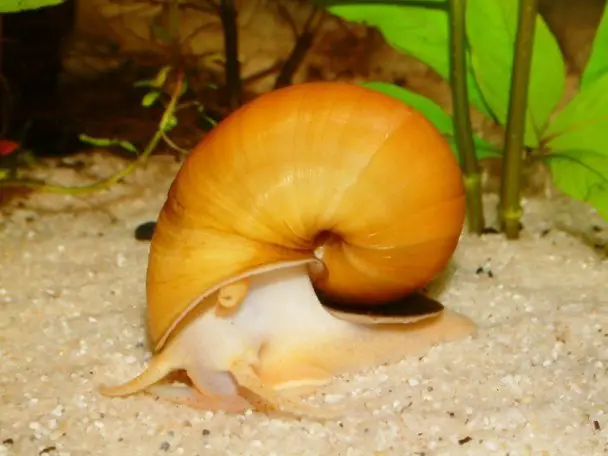Apple snails eggs contain unique poison

Apple snails are now banned from the European aquatic trade after becoming established in Spain © Polarlys
Apple snails of the genus Pomacea have been popular aquarium inhabitants for decades but were recently banned from the European trade following a request from Spanish authorities due to one species, P. insularum, becoming established in certain wetlands following release by aquarists.
The congener P. canaliculata has been introduced to Hawaii and various countries in Southeast Asia where it’s considered a highly invasive pest since it not only competes with native molluscs but feeds on aquatic plants and can devastate rice and other semi-aquatic crops.
It’s considered one of the 100 world’s worst invaders, according to the Global Invasive Species Database.
New research published in the open access journal PLoS ONE this week has revealed that the eggs of P. canaliculata are filled with a powerful neurotoxin making them unpalatable to virtually all potential predators with the only known exception being the fire ant, Solenopsis geminata, although no-one is quite sure how it’s able to eat them.

Two invasive species together at a habitat in China; bright pink Pomacea eggs with the African aquatic plant Pistia stratiotes © Shan Lv
Apple snail eggs are unusual anyway insofar that they’re brightly-coloured, pink-reddish in the case of P. canaliculata, and deposited outside of the water, characters that not only make them visible but also vulnerable to both predators and parasites.
The bright colour is thought to act as a visual deterrent to predators while a study published in 2010 revealed that proteins deposited around a fertilised egg, within the perivitelline fluid, are involved in egg defence.
One of these proteins, PcPV2, is a neurotoxin with a strong lethal effect on the central nervous system of mice and the new research demonstrates that this substance is pretty unusual in a number of ways.
For example its structure is of a type known as ‘AB toxins’ which were previously known only in certain bacteria and plants, and represents the first record of a defense system employed by plants against predators in an animal.

To date the tropical fire ant is the only species able to eat Pomacea eggs without ill effects © Antweb.org
AB toxins tend to be ingested orally and can remain active after passing through the gastrointestinal tract of higher animals where extremes of pH restrict the activity of some other types of toxin.
This suggests that the protein evolved in order to confer a survival advantage to the eggs and has resulted in a virtual absence of predators as well as pointing towards previously unknown similarities between toxic plant seeds and poisonous eggs.
It may also provide clues as to why apple snails are able to colonise new habitats so successfully, and raises inevitable questions regarding the role of the aquarium trade in facilitating some of these introductions.
For further information refer to the full, open access paper: Dreon, M. S., M. V. Frassa, M. Ceolín, S. Ituarte, J-W. Qiu, J. Sun, P. E. Fernández and H. Heras. 2013. Novel Animal Defenses against Predation: A Snail Egg Neurotoxin Combining Lectin and Pore-Forming Chains That Resembles Plant Defense and Bacteria Attack Toxins. PLoS ONE 8(5): e63782
Category: Aquatic Invertebrates, Blogs | Tags: Apple snail, aquarium, invasive species, PLoS ONE, Pomacea | One comment »


Product reviewers wanted
Are you still looking for product reviewers?
19th Dec 2024
Product reviewers wanted
Hey! Interesting article!
17th Dec 2024
Site improvements
Got it! Thanks for the update. It's good to know that Seriously Fish is working on improving the site's performance and addressing the email and forum...
21st Nov 2024
Responsive design
Nice
13th Nov 2024
Responsive design
it is a complete malfunctioning horror on iphone and ipad.
10th Nov 2024